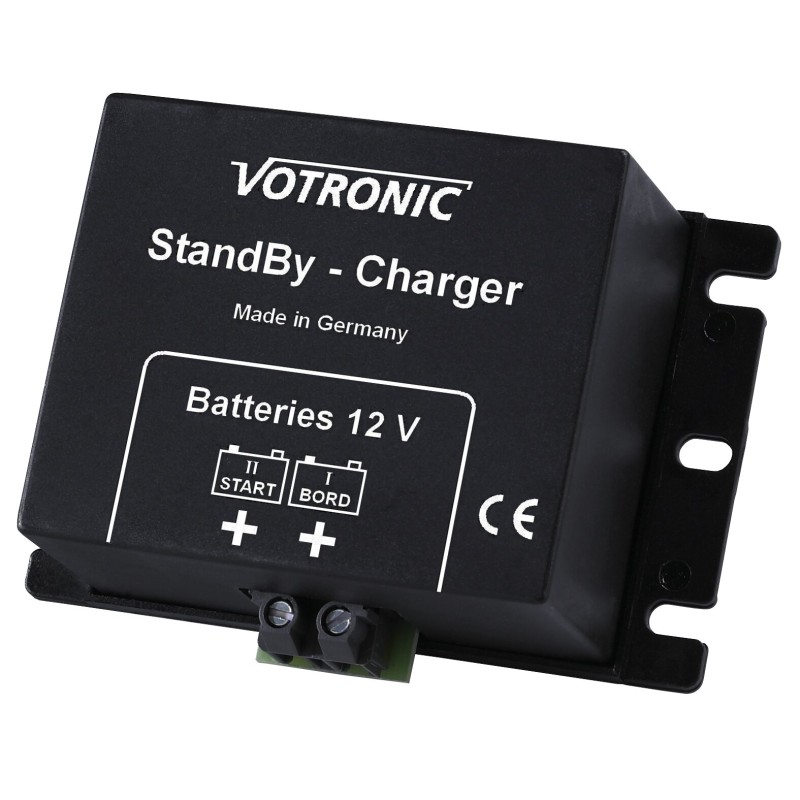 Μετάφραση από την Google
Αρχικό κείμενο
Μετάφραση από την Google
Αρχικό κείμενο
Οι αυτόματοι φορτιστές VOTRONIC, οι οποίοι είναι εξοπλισμένοι με την τελευταία τεχνολογία φόρτισης και έχουν σχεδιαστεί για όλες τις μπαταρίες μολύβδου που διατίθενται στο εμπόριο, διασφαλίζουν τη σωστή φόρτιση της μπαταρίας. Οι περιφερειακές συσκευές της VOTRONIC, οι οποίες λειτουργούν στο παρασκήνιο και παρέχουν αυτοματοποιημένο έλεγχο φόρτισης και παρακολούθηση της μπαταρίας, διασφαλίζουν τη σωστή μεταχείριση των μπαταριών στην καθημερινή λειτουργία. Σε αυτοκινούμενα, σκάφη, οχήματα έκτακτης ανάγκης κ.λπ., οι μπαταρίες πρέπει επίσης να παρέχουν ενέργεια όταν το όχημα είναι σταματημένο. Για το λόγο αυτό, συνήθως τοποθετούνται αρκετές μπαταρίες σε αυτά τα οχήματα, οι οποίες χρησιμοποιούνται ξεχωριστά για οδήγηση και ακίνητη λειτουργία. Γίνεται διάκριση μεταξύ της μπαταρίας/μπαταριών εκκίνησης και τροφοδοσίας. Όπως υποδηλώνει το όνομα, η μία μπαταρία είναι υπεύθυνη για την αξιόπιστη εκκίνηση του οχήματος, ενώ η άλλη τροφοδοτεί/τροφοδοτεί τις ηλεκτρικές συσκευές του οχήματος. Για να διασφαλιστεί ότι κάθε κύκλωμα μπαταρίας λειτουργεί αξιόπιστα και ότι η ηλεκτρική ιδέα του οχήματος λειτουργεί σωστά, χρησιμοποιούνται διάφορες συσκευές για τον έλεγχο της φόρτισης κατά την οδήγηση. Ο φορτιστής αναμονής VOTRONIC χρησιμοποιείται για την αυτόματη επαναφόρτιση και διατήρηση της φόρτισης της μπαταρίας εκκίνησης ή της βοηθητικής μπαταρίας εάν ο φορτιστής ρεύματος, ο ελεγκτής ηλιακής φόρτισης ή η γεννήτρια έχουν μόνο μία έξοδο φόρτισης. Η συσκευή μπορεί να τοποθετηθεί εύκολα εκ των υστέρων συνδέοντάς την απλώς μεταξύ της μπαταρίας RV και της μίζας ή της μπαταρίας RV και της βοηθητικής μπαταρίας χωρίς να χρειάζεται να αλλάξετε την υπάρχουσα καλωδίωση. Εάν, για παράδειγμα, ο φορτιστής δικτύου βρίσκεται σε λειτουργία και φορτίζει την μπαταρία RV, η δεύτερη μπαταρία (μπαταρία εκκίνησης ή βοηθητική μπαταρία) φορτίζεται επίσης με ένα μικρό μέρος του ρεύματος φόρτισης, ανάλογα με την κατάσταση φόρτισης. Αυτή η συγκράτηση φόρτισης λειτουργεί αυτόματα και είναι αναγνωρίσιμη από το αυξημένο επίπεδο τάσης της δεύτερης μπαταρίας. Η υπερφόρτιση της δεύτερης μπαταρίας είναι αδύνατη καθώς η τάση φόρτισης μειώνεται κατά τουλάχιστον 0,6 V και το ρεύμα φόρτισης περιορίζεται στα 3 A. Δοκιμαστική ένδειξη: CE, E-test (Οδηγία EMC/οχήματος).
The VOTRONIC Automatic Chargers, which are equipped with the latest charging technology and designed for all commercially available lead batteries, ensure correct battery charging. The peripheral devices from VOTRONIC, which work in the background and provide automated charge control and battery monitoring, ensure that the batteries are treated correctly in daily operation. In motorhomes, boats, emergency vehicles, etc., the batteries must also supply energy when the vehicle is stationary. For this reason, several batteries are usually installed in these vehicles, which are used separately for driving and stationary operation. A distinction is made between starter and supply battery/batteries. As the name suggests, one battery is responsible for reliably starting the vehicle, while the other(s) supplies/supply power to the electrical devices in the vehicle. To ensure that each battery circuit works reliably and that the vehicle's electrical concept functions properly, various devices are used to control charging while driving.
The VOTRONIC Standby-Charger is used to automatically recharge and maintain the charge of the starter battery or the auxiliary battery if the mains charger, the solar charge controller or the generator only has one charging output. The device can be easily retrofitted by simply connecting it between the RV and starter battery or the RV and auxiliary battery without having to change the existing wiring. If, for example, the mains charger is in operation and charging the RV battery, the second battery (starter battery or auxiliary battery) is also charged with a small portion of the charging current, depending on the state of charge. This charge retention works automatically and is recognisable by an increased voltage level of the second battery. Overcharging of the second battery is impossible as the charging voltage is reduced by at least 0.6 V and the charging current is limited to 3 A. Test mark: CE, E-test (EMC/vehicle directive).



